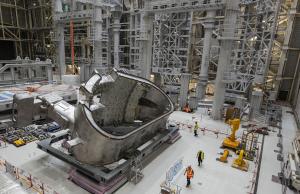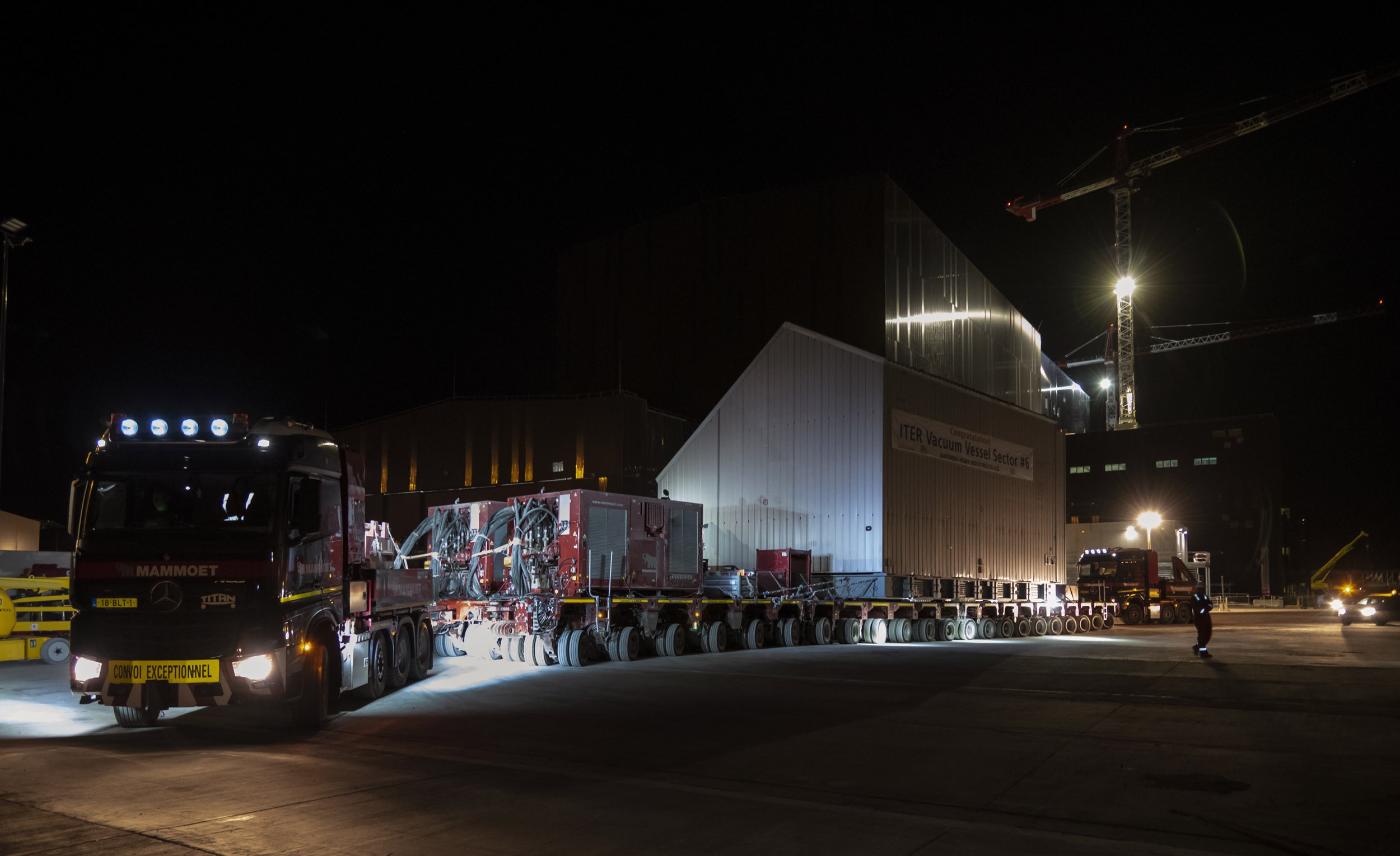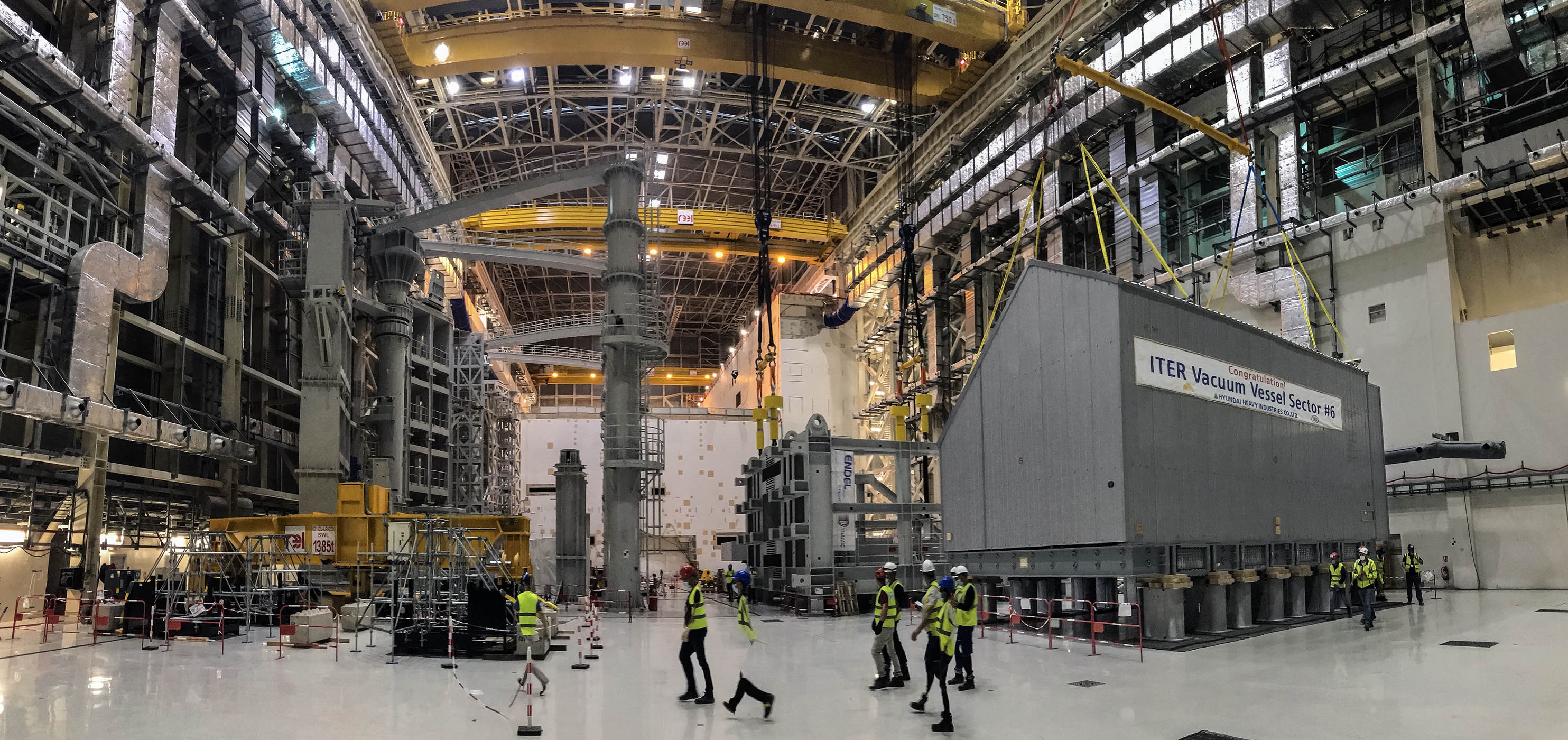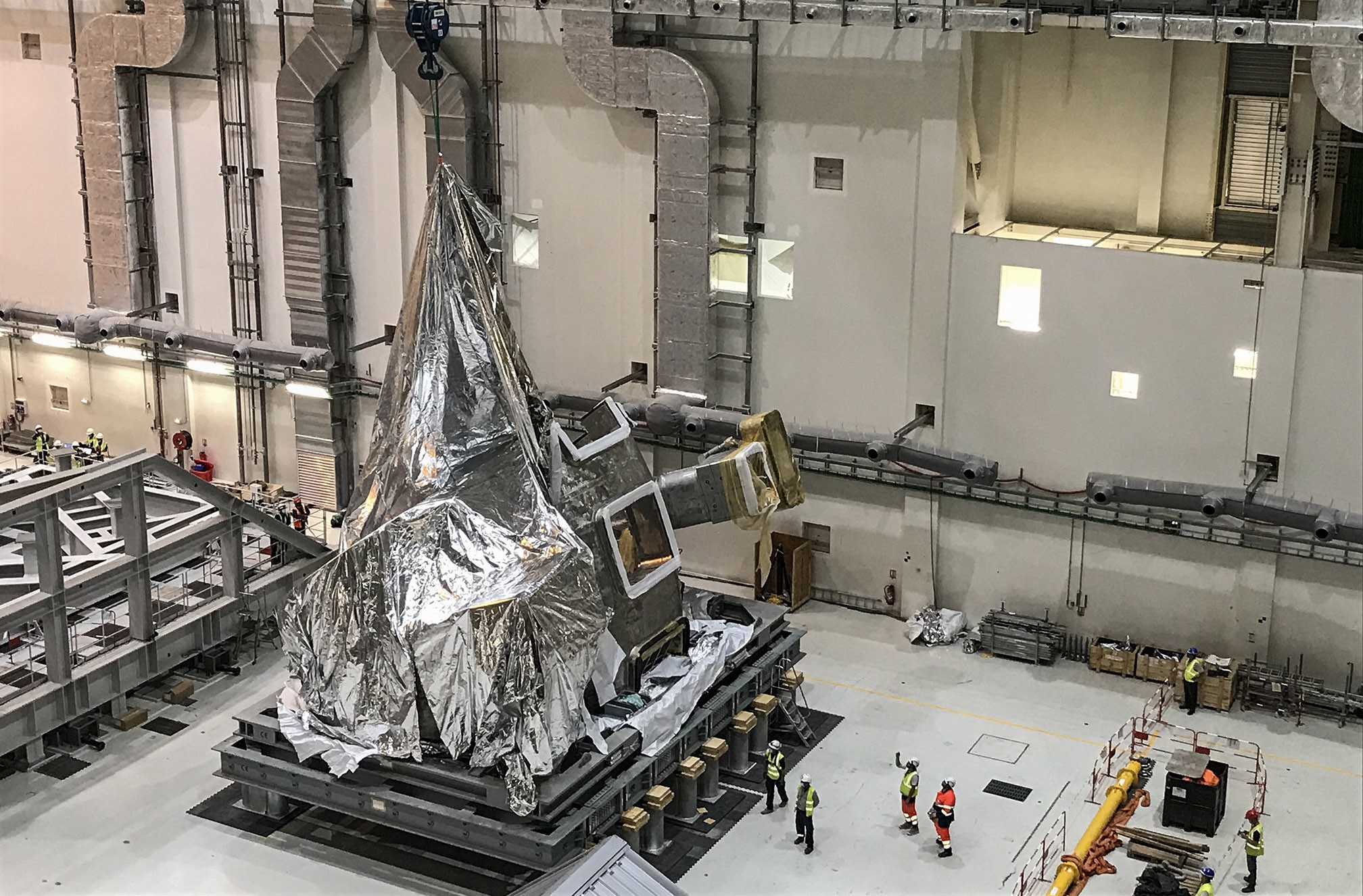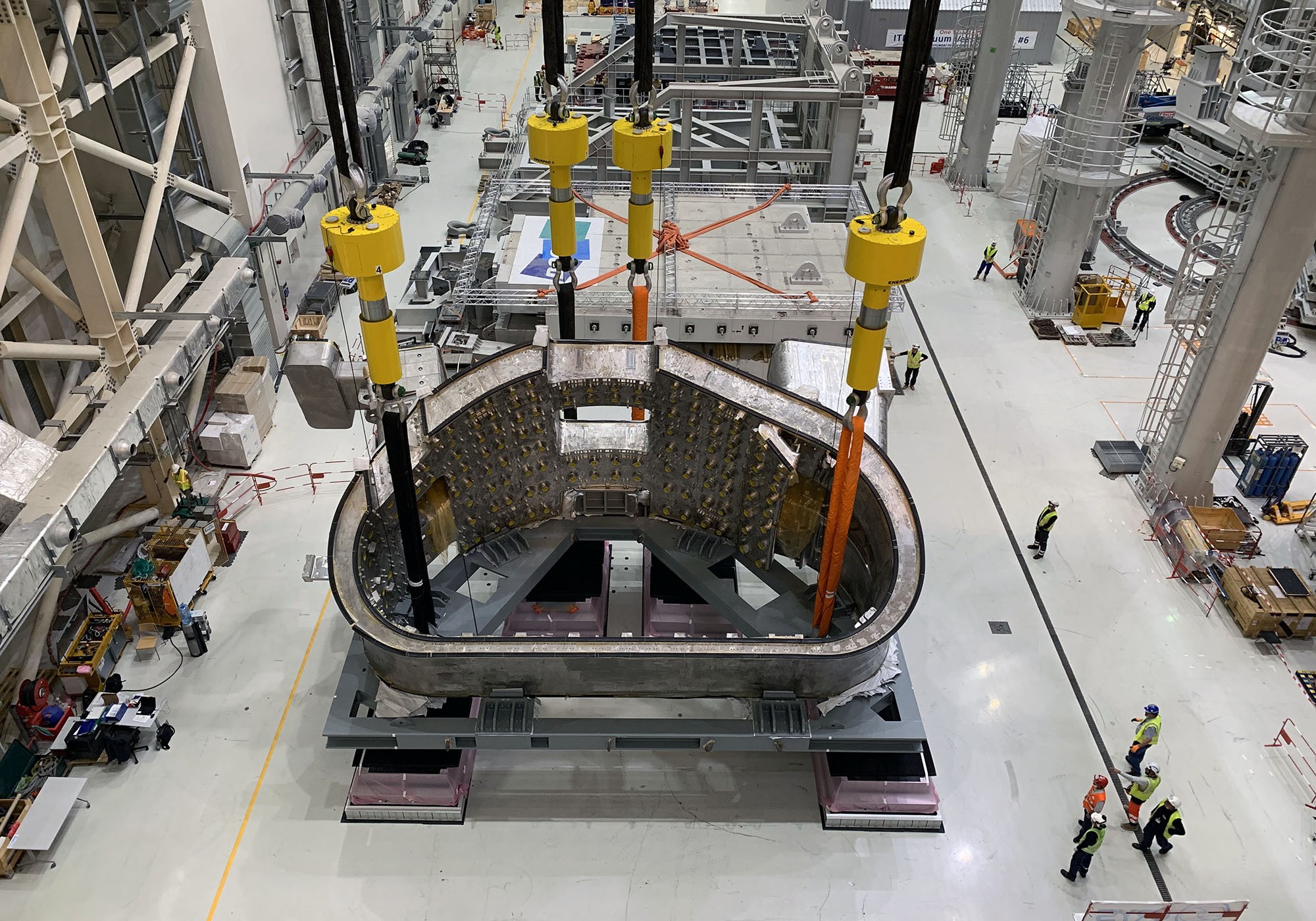Vacuum vessel
First sector unveiled
7 Sep 2020
Travelling in nondescript casing, like a mobile home designed by an uninspired architect, the first of nine sectors of the ITER vacuum vessel was delivered to ITER on 7 August. Five days later, as the housing was removed, the jewel was revealed in all its strangeness: a massive, 440-tonne, D-shaped chunk of steel, dotted with hundreds of protruding cylindrical bumps that evoked a perfectly aligned, metallic measles eruption.
Beyond its alien shape and its awesome mission, this unique industrial object carries a strong symbolic dimension. It will stand at the core of the first 1,200-tonne pre-assembly to be installed into the assembly pit.
Once combined and welded, four sectors supplied by Korea and five supplied by Europe will form ITER's toroidal plasma chamber. As for the measles eruption, it is caused by the "flexible support housings" or "cartridges"—1,760 of them in total and approximately 200 per sector—onto which the blanket shield blocks will be attached.
Beyond its alien shape and its awesome mission, this unique industrial object carries a strong symbolic dimension. It will be the first to be "upended" to vertical and placed within the open arms of ITER's tallest assembly tool—one of the twin sector sub-assembly tools (SSATs)—to be associated with two D-shaped toroidal field coils (TF12 and TF13) and corresponding thermal shielding.
Vacuum vessel sector #6 will stand at the core of the first 1,200-tonne pre-assembly—the first to be delivered by overhead crane into the Tokamak pit. Lessons learned on this first pre-assembly operation will contribute to increased ease and faster turnaround times for all other vacuum vessel pre-assembly sequences.
For the moment, the component has been transferred to the far end of the Assembly Hall, where the ITER team has performed a helium leak test. A full report will be published in next week's Newsline.

